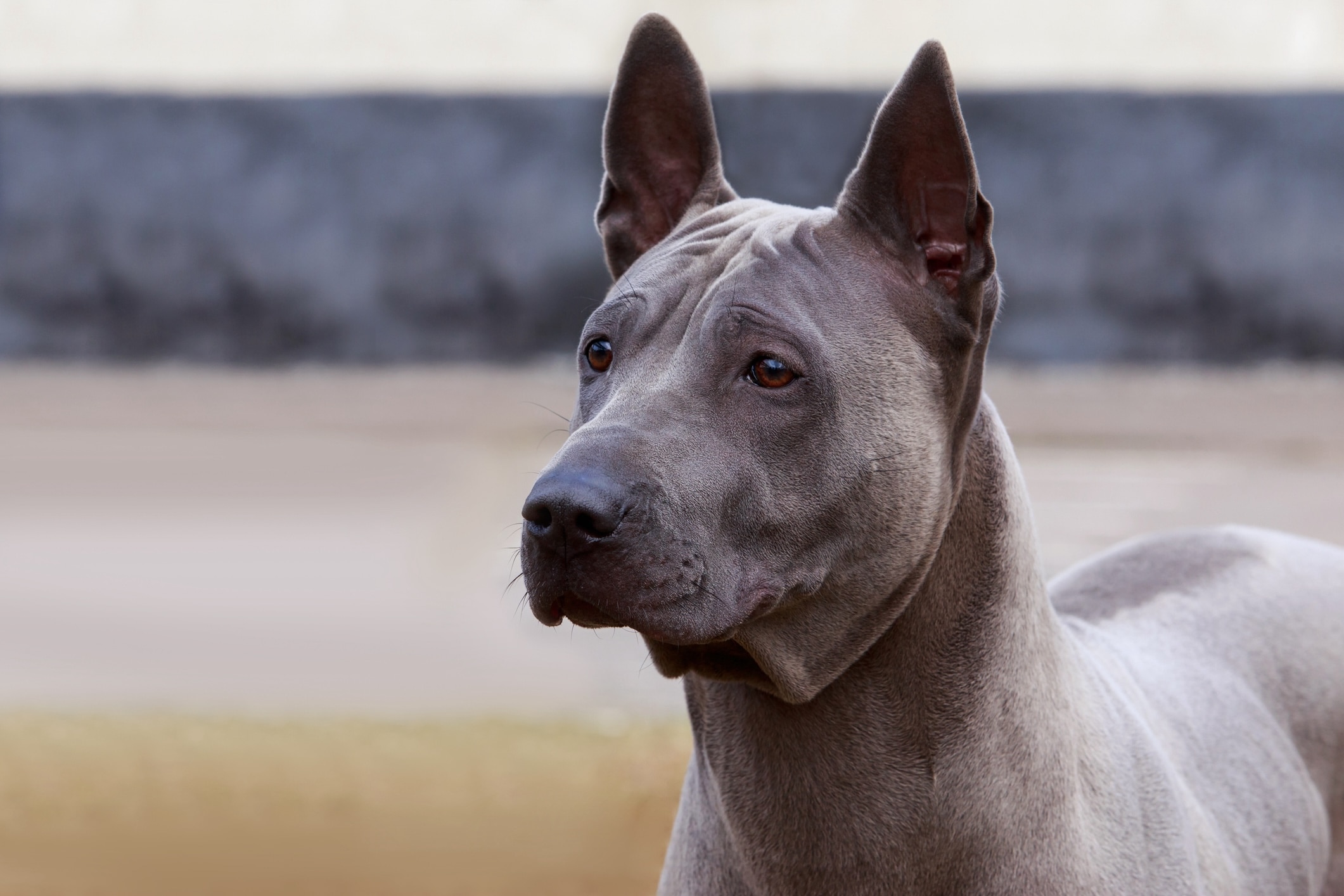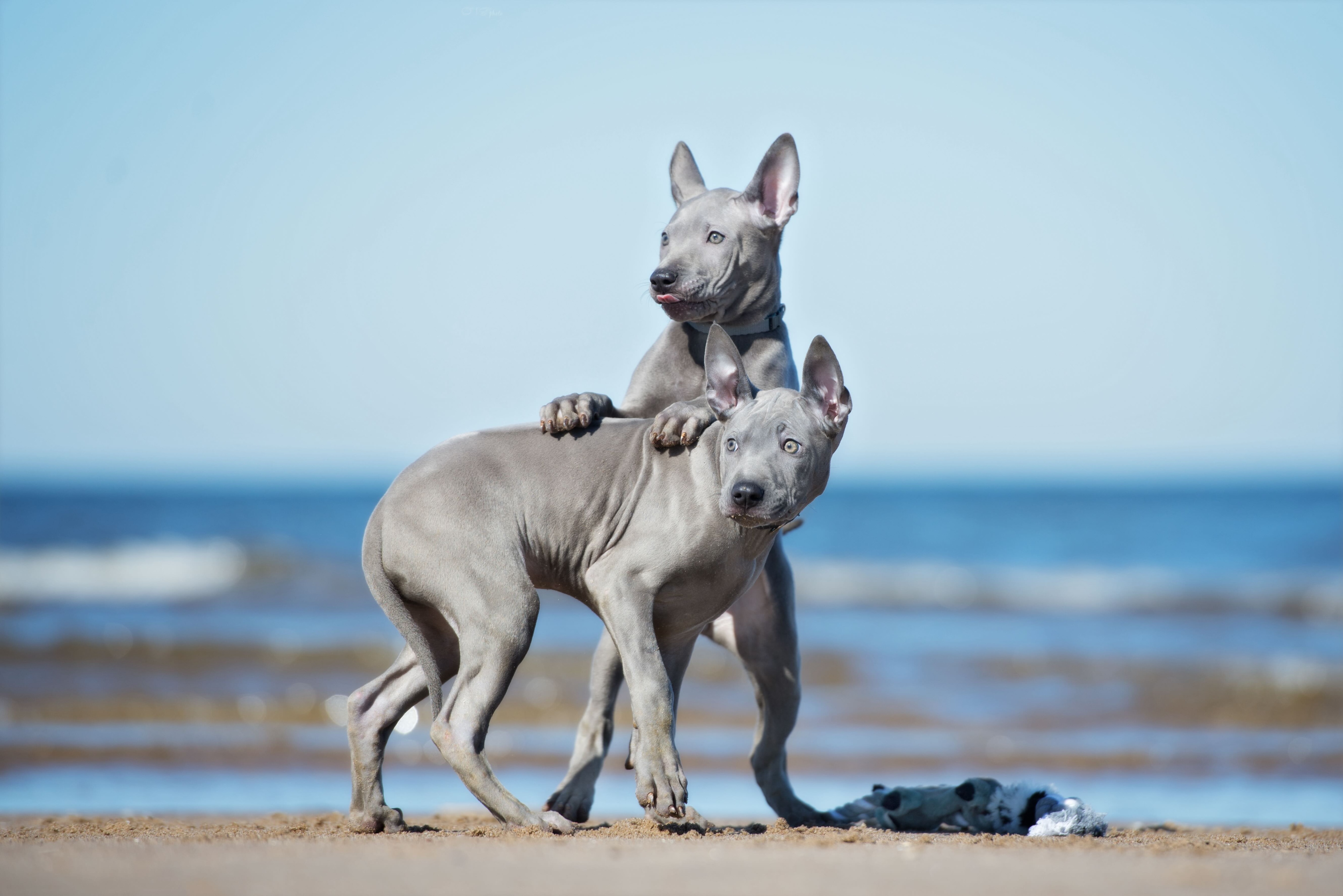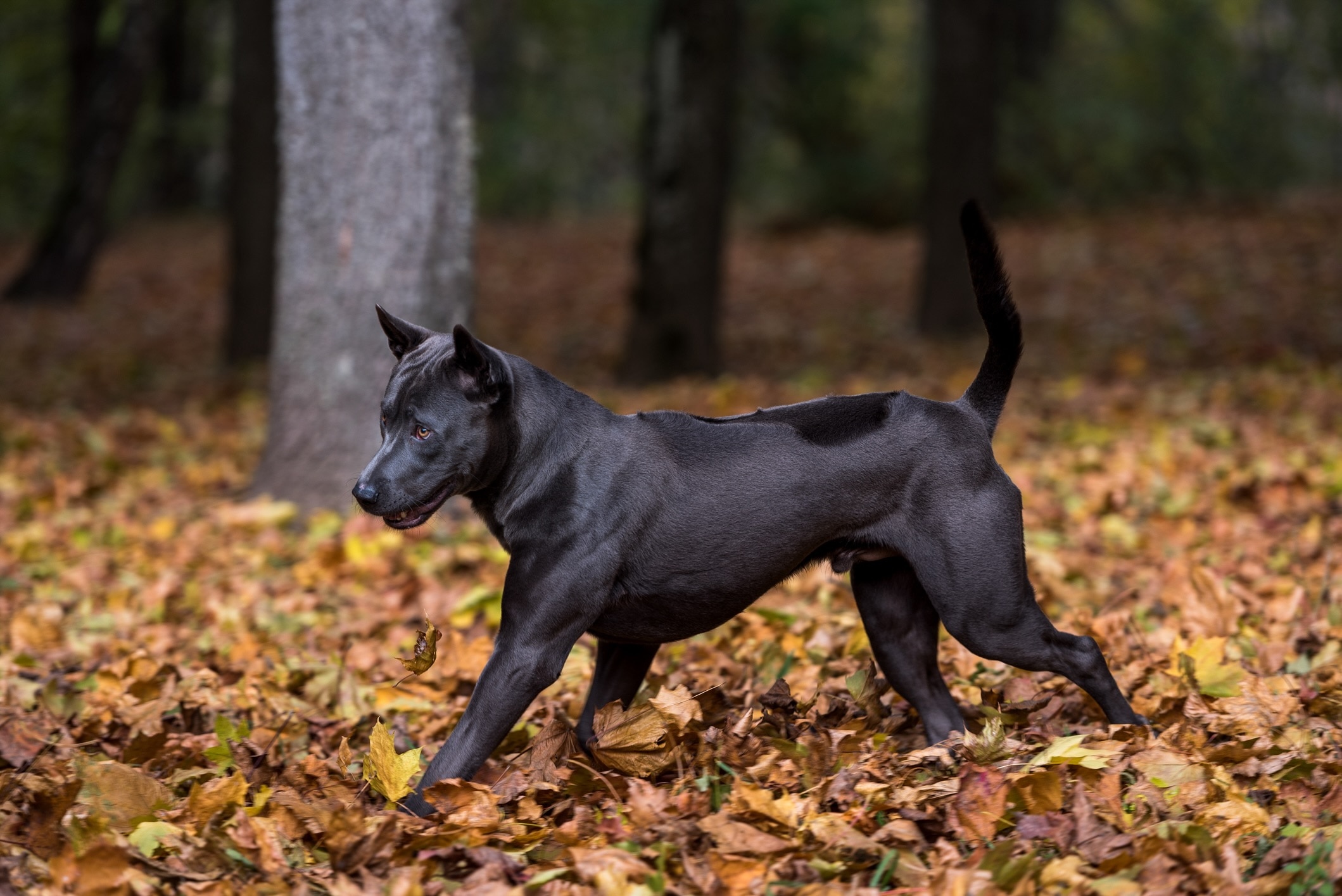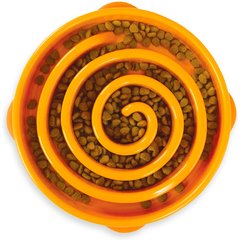Thai Ridgeback
Adobe Stock/honey_paws
The Thai Ridgeback is a highly intelligent dog originating from Thailand. Originally used for their keen hunting skills, this breed is now as a family dog.
The Thai Ridgeback, like the Rhodesian Ridgeback, is known for a distinctive ridge on the back made by fur that points in the opposite direction from the rest of the coat. But not all ridges are the same—there are up to eight different ridge patterns a Thai Ridgeback dog can have. Despite their similar coats, the Rhodesian and Thai Ridgebacks are not related.
A medium-to-large breed, the Thai Ridgeback stands 20–24 inches tall and weighs 35–75 pounds. They have a short coat that can be fawn, blue, black, or red.
Caring for a Thai Ridgeback
Thai Ridgebacks can make great family dogs due their devotion and loving nature. They are very smart and have a moderate to high energy level. Their coat does shed, but a weekly brushing and an occasional bath is typically all that’s needed for maintenance.
But this might not be the best dog for first-time pet parents. Due to the breed’s history as working dogs, Thai Ridgebacks are independent, can be reserved around strangers, and have a strong prey drive to chase smaller animals. Thai Ridgeback dogs need a more experienced caregiver who can put them through proper training and socialization classes.
Thai Ridgeback Health Issues

The average Thai Ridgeback lifespan is 14–15 years, which is about average for a medium-sized dog. While they are generally a healthy dog breed, all dogs—including Thai Ridgebacks—can develop certain health conditions throughout their life.
Hip Dysplasia
Hip dysplasia is an inherited orthopedic condition where the hip joint doesn’t properly align. This will lead to inflammation and pain in the joints (arthritis). Hip dysplasia can develop in one or both hip joints, and symptoms include:
-
Slowness to rise from a lying position
-
A “bunny-hopping” gait when running
-
Reluctance to run, jump, or go up or down stairs
-
Holding the affected leg out to the side when sitting up
Hip dysplasia can be managed with joint supplements and certain medications. In serious cases, surgery may be required.
Dermoid Sinus
The Thai Ridgeback dog breed can have a dermoid sinus, which is an opening in the skin that is present at birth. These are most often found on the back of the neck or over the spine. If the opening is deep enough, it can expose ligaments and the spinal cord.
The severity of the dermoid sinus depends on its location and how deep it is. Sometimes these cysts can cause abnormalities in the vertebrae or forelimbs.
Diagnostic tests including X-rays and advanced imaging (CT or MRI) may be needed to diagnose a dermoid sinus and determine its depth and severity. Surgical removal of the dermoid sinus is the gold standard for treatment. However, the outcome depends on the severity and if it affects the spinal cord.
Potential pet parents should work with a reputable Thai Ridgeback breeder to verify the health of their puppy.
What To Feed a Thai Ridgeback
During the first 12 months of life, a Thai Ridgeback puppy needs to eat a high-quality puppy formula that’s high in calories to allow for proper growth. At 1 year of age, the diet should be slowly transitioned to an adult dog formula.
When your dog reaches their golden years, talk to your veterinarian about whether they need to transition to a senior dog food.
Consult with your vet on whether to feed your Thai Ridgeback a medium-sized dog formula or a large-breed dog formula. No matter what food you give your dog, make sure it meets the nutritional standards of the Association of American Feed Control Officials (AAFCO).
How To Feed a Thai Ridgeback
Thai Ridgeback puppies should eat two to three meals throughout the day. Adult dogs can eat two meals per day, one in the morning and one in the evening.
To prevent gastrointestinal upset, use a slow feeder bowl at mealtime if your dog eats too quickly.
How Much Should You Feed a Thai Ridgeback?
It’s best to follow the feeding guidelines on the dog food packaging, but you should also consult with your veterinarian to determine the proper portion size to feed your Thai Ridgeback. The amount to feed your dog is dependent upon their ideal body weight, life stage, health, and activity level.
Always measure out the food for each meal to ensure you’re feeding your pup the proper amount. Your Thai Ridgeback’s daily diet should consist mostly of well-balanced dog food (90%), with only 10% at most being dog treats.
Nutritional Tips for Thai Ridgebacks
A healthy Thai Ridgeback will meet their daily nutritional requirements by eating a high-quality dog food. As long as your dog’s diet is AAFCO-approved, this dog breed shouldn’t need supplementation.
However, if your Thai Ridgeback has hip dysplasia or a dermoid cyst affecting their spine or forelimbs, your veterinarian may recommend a joint supplement, an omega-3 fatty acid supplement, and/or a prescription joint diet to minimize inflammation.
Behavior and Training Tips for Thai Ridgebacks
Thai Ridgeback Personality and Temperament

While every dog is an individual, the typical Thai Ridgeback temperament is relatively independent. While they can be reserved around people they don’t know, this dog breed is devoted to their family. They can make a good family dog with proper training.
Thai Ridgebacks need at least one hour of exercise every day to meet their moderate-to-high energy level. They can burn off their energy in a variety of ways, including going on walks, swimming, running in a fenced-in yard, or playing fetch outside. Once their energy is spent, they enjoy being lazy inside with their humans.
Thai Ridgeback Behavior
They can be good with young children and other dogs when introductions are supervised and done properly, and if trained from a young age. However, due to their strong prey drive, Thai Ridgebacks might not be the best fit for homes with smaller pets like cats, rabbits, or hamsters.
Because of this prey drive, Thai Ridgeback dogs also need to be kept on a leash or in a fenced yard when they’re outside. Make sure the fence is tall, about 6 feet, as the American Thai Ridgeback Association (ATRA) says these dogs can jump high and easily clear lower fences.
Thai Ridgeback Training
The Thai Ridgeback is an intelligent dog, but they can be difficult to train because they enjoy their independence. For this reason, this breed is not a good choice for a first-time dog parent.
Consistent, patient, and positivity-based training is vital for this breed. When you keep their training sessions engaging and fun, Thai Ridgebacks can pick up cues quickly.
Socializing Thai Ridgeback puppies is just as important as training. Without socialization, this dog breed can be standoffish toward strangers. Enroll your Thai Ridgeback puppy in socialization classes, puppy training classes, and obedience training.
Fun Activities for Thai Ridgebacks
Thai Ridgeback Grooming Guide

Whether you have a fawn, red, black, or blue Thai Ridgeback, the dog’s short hairs don’t require a lot of maintenance. Matting is not a problem for this breed, though they do shed regularly year-round and more heavily during the spring when the weather begins warming.
Skin Care
The Thai Ridgeback does not require special skin care. They only need baths when their coat gets dirty or smelly.
Coat Care
The single-layered, short-haired coat on the Thai Ridgeback requires minimal care. Brushing once a week will keep loose hairs from ending up on your floor and furniture. But during shedding season, their coat should be brushed more often.
Eye Care
The Thai Ridgeback does not need any special eye care. Contact your veterinarian if you notice changes in your dog’s eyes (such as discharge or redness) or vision. This may be indicative of a health problem.
Ear Care
Thai Ridgebacks can accumulate wax in their ears and occasionally develop ear infections. Cleaning their ears with an ear cleaner like Epi-Otic® Advanced every three to four weeks and after baths and swimming can minimize ear issues in this breed.
Considerations for Pet Parents
While the Thai Ridgeback can make a great family companion, they’re not the right dog for every family.
Thai Ridgebacks need a pet parent who will dedicate time to training and socializing their dog throughout their life. This dog breed’s working dog history means it’s important that Thai Ridgeback puppies are taught that new people and situations aren’t something to be suspicious of, and that smaller animals shouldn’t be chased.
Pet parents need to pay attention to this dog’s prey drive in particular, as Thai Ridgebacks can dart after whatever catches their eye. They may not do well in homes with smaller animals, especially without proper introductions.
The perfect home for a Thai Ridgeback would have a tall fence in the backyard. This allows for running and playing, while also preventing a Thai Ridgeback from roaming or going after prey.
Thai Ridgeback FAQs
Is a Thai Ridgeback a good family dog?
Yes, the Thai Ridgeback can make a great family dog for those who take the time to train and socialize them.
How much does a Thai Ridgeback cost in the US?
The Thai Ridgeback price can vary greatly. On average, puppies can cost $1,800–$3,000. If they are from a champion breeding line, they can cost up to $5,000.
Why is the Thai Ridgeback rare?
The Thai Ridgeback is rare outside of Thailand, where the dogs originated. It can be difficult to get a Thai Ridgeback puppy—in fact, the only breed club-verified breeder is still in Thailand. You may, however, be able to find a dog through the breed club’s Thai Ridgeback rescue.




